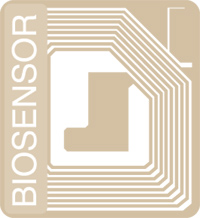NINGBO HAIFU PLASTIC APPLIANCE CO.,LTD , https://www.hifel.com
â—† mechanical: for example, self-mixed packaging; for example, small appliances that can produce foam in beverages, advanced aerosol products;
â—† Electrical: For example, throw away battery test tags;
â—† Electronic: for example, conductive ink games on McDonald's food packaging bags;
â—† Chemical: for example, two chemicals that react when released, such as epoxy resin glue; wine in oak containers; perfume packaging that emits aromas for promotional purposes; better preserves food gas Adjust the packaging.
â—† Packaging that uses only one technology can be called the first generation of smart packaging. Such a packaging method includes a wider range. We have already seen examples of multiple functions that fall into the same technology. For example, radio frequency identification (RFID) tags are used on library DVD disc security tags to implement electronic article surveillance systems. Function (EAS).
The second-generation smart tags combine two or more principles in the fields of mechanics, electronics, electronics, and chemistry. The strength of this combination is extremely strong, with the effect of "two plus two equals five." The examples listed in this article either already have corresponding products or products will soon be available. 
Machinery + Electronics: Foam containers or bottles for packaging medicines can record the availability of medicines (Aardex); Packing locks out after the product in detection has expired (expected); Locked DVD for store display Packing box to avoid loss of EAS tags inside (V-Tech).
â—† Mechanical + Chemical: Harpic-brand power jet sink cleaning aerosols can also be used to blow away waterway plugs (Reckitt Benkiser).
â—† Mechanical + Electrical: Electrostatic aerosol can evenly apply cosmetics to facial skin (Procter & Gamble Japan).
â—† Chemistry + electronics: Self-cooling packaging can prompt when the temperature is appropriate (expecting); packaging emits aroma when a customer is detected nearby (in anticipation); biosensors and printed circuits work together to monitor the stagnation of food in the supply chain Changes in time and temperature (Bioett); RFID tags with biosensors can detect and identify germs and toxic substances (expected).
â—† Chemistry + Electrical: The first generation of skin patches uses electrical principles to accelerate skin absorption of drugs (Power Paper).
â—† Chemical + Electrical + Electron: The second generation of skin patches has the effect of the first generation of skin patches above, and it can also establish time intervals for intermittent effects (expectation).
There is no corresponding product for the second-generation skin sticker. If it is delivered with the drug, it can avoid the waste of drugs that cannot be absorbed and it is very convenient for the patient. We have seen that similar patches are attached to small instruments and play a similar role. Many companies have contributed to the development of this product, such as Vyteris, Empi and Alza. 
The image that appears on the top of this page is a biosensor label that Bioett brings to electronically monitor packaging time and temperature changes. Both Findus Foods and a dairy company from Sweden tried the label and it worked well. If it is mass-produced, its price is expected to fall to 10 cents, and it can be widely used. A biosensor tag that combines RFID technology is in the process of development.
In many cases, complex smart packaging adopts the principles of multiple disciplines and can be seen as having evolved over a long period of time. A good example is an active package that can release gas to help preserve food. If one considers the use of wine in oak containers to impart flavor to the wine, active packaging using chemical properties has had a history of at least 1,000 years. In daily life, we can often see functional packages that are used to preserve and season when needed. (Packaging Digest)
In order to achieve the effect of anti-counterfeiting, tracking and anti-theft, optical technologies such as hologram codes and bar codes have been introduced into packaging technology, but these are mostly variants of an old method and are generally not called smart ones. The introduction of magnetic properties - such as embedded fibers and magnetic strips can hardly be called new technology. The term “smart packaging†is mainly used for packaging technologies that use mechanical, electrical, electronic, and chemical properties because these technologies appear later and are more intelligent. Examples of smart packaging include the following:
January 30, 2024